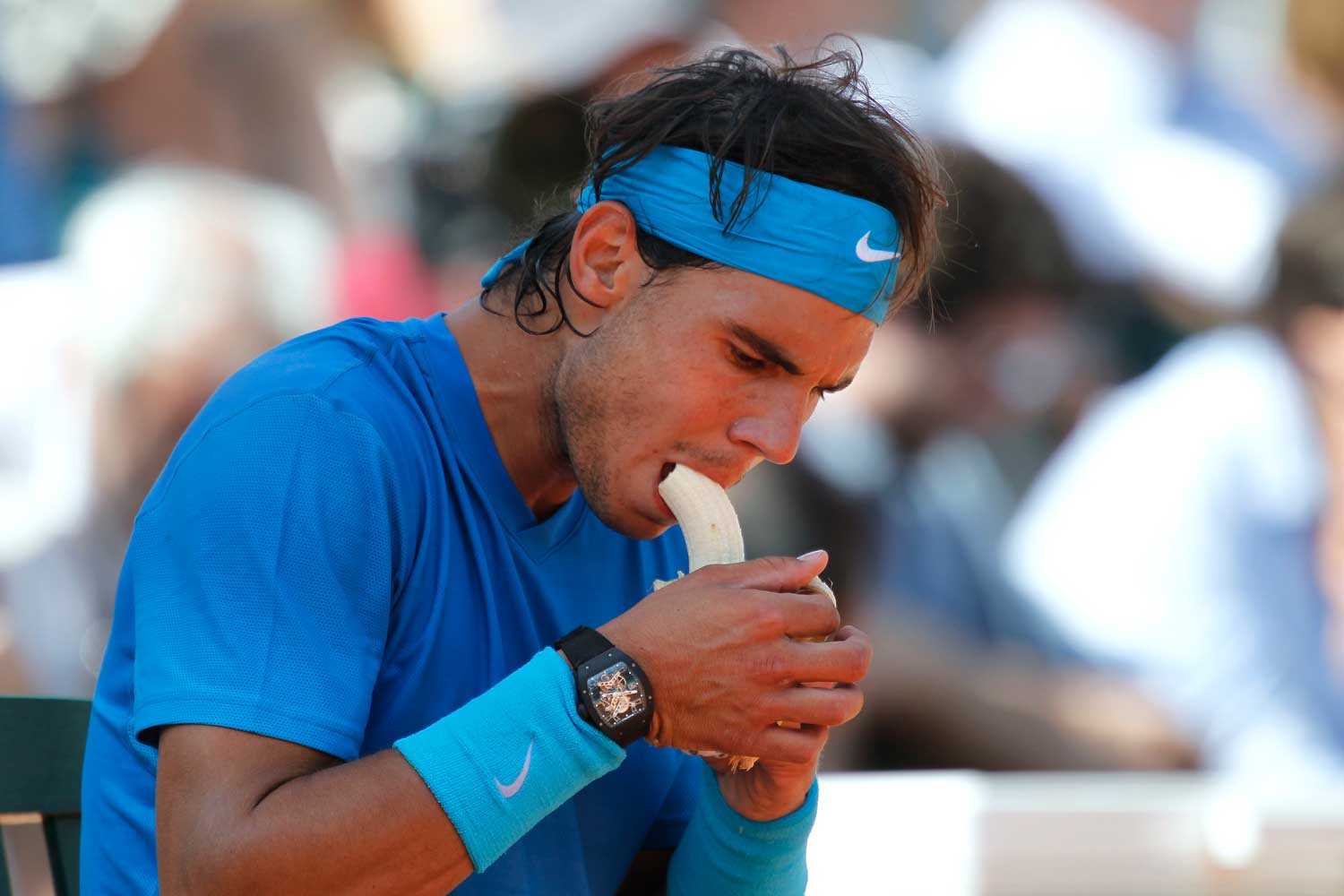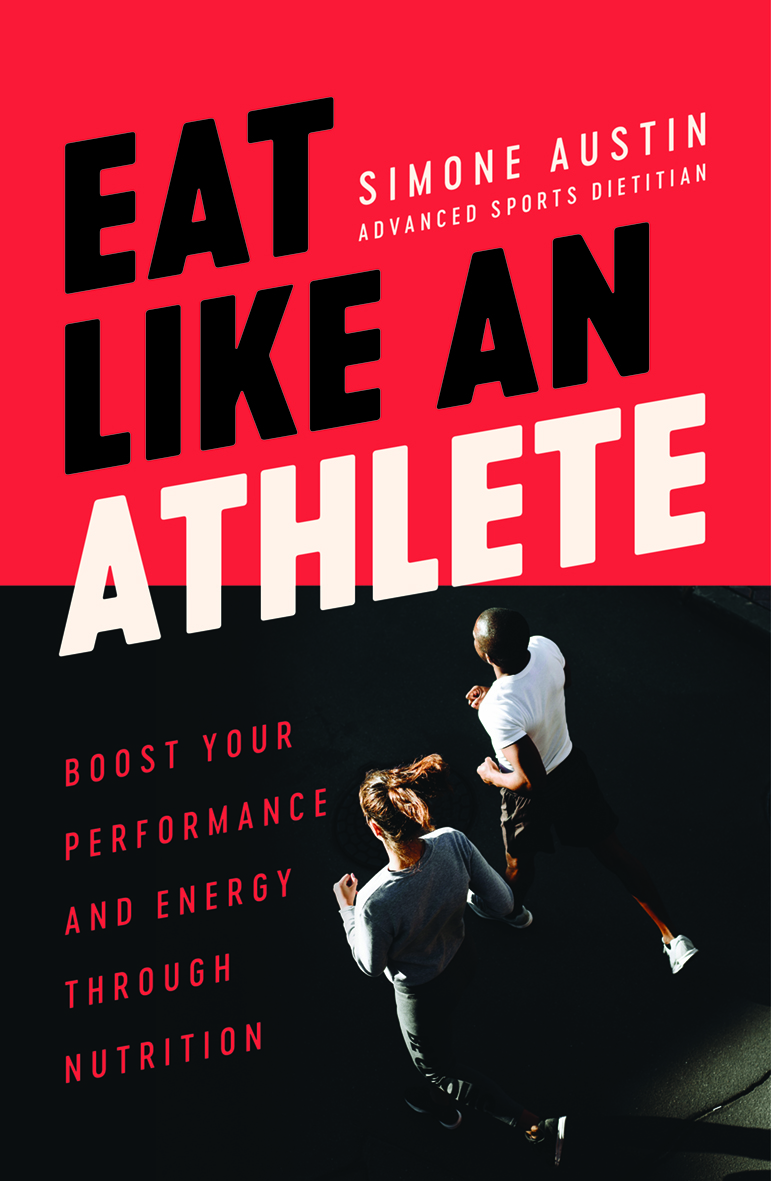
Should I eat carbs?
The answer to this question is most definitely yes. This doesn’t mean you need to overdo it, of course – balance is still key. Eating a massive bowl of pasta just because you have a match the next day can be excessive. Rather than giving you energy, this is more likely to leave you feeling heavy and bloated and may interrupt your sleep.
Which carbohydrates are best?
There are many different carbohydrate-containing foods. Some are nutrient rich, offering a combination of micronutrients (vitamins and minerals), antioxidants, protein, healthy fats, dietary fibre and/or resistant starch, which is beneficial for gut health (see chapter 9 for more information about this). For example, rice, legumes and pasta contain protein, carbohydrate and an array of micronutrients. Fruit contains carbohydrate, fibre and micronutrients. This range of nutrient-rich carbohydrates is what we should be eating most of for good health.
All plant foods contain varying degrees of carbohydrate: fruits, vegetables, grains and legumes, to a smaller degree seeds and nuts. In the animal world, dairy provides carbohydrate in the form of the sugar lactose.
When it comes to grains, as a general rule, those carbohydrates that are higher in dietary fibre are the ones to choose. We know wholegrains have beneficial effects on health, reducing the risk of chronic diseases such as diabetes, heart disease and some cancers, particularly bowel cancer, which are all major causes of death in Australia. The dietary fibre also helps with good gut health, thus benefiting overall health.
Foods containing high dietary fibre, such as wholemeal pasta, legumes and vegetables, help keep you feeling full for longer. These are particularly useful for those sports with body composition and weight restrictions.
The low-nutrient carbohydrates such as soft drink, sports drinks, lollies, cakes and biscuits should be kept to a minimum, as they offer little nutritional value and can be detrimental to health. These can be beneficial for quick, easily available energy under certain circumstances, such as during endurance events, marathons, long hikes, triathlons and high-intensity exercise lasting longer than 60 minutes.
Structure of carbohydrates and the glycaemic index
Carbohydrates can contain sugars. There are many different types of sugars, including glucose, lactose, galactose, sucrose and starches. Many carbohydrates – often referred to as ‘good’ or ‘complex’ carbohydrates – contain starches. Starches are made up of glucose molecules joined together in long chains called polysaccharides. I think of these chains as a string of beads, with each ‘bead’ being a glucose molecule. These molecules are digested, ready to be absorbed into the bloodstream.
These polysaccharide chains can be made up of either amylose or amylopectin starches. An amylose chain is one straight chain, while an amylopectin chain has numerous branches. Foods with a greater proportion of amylopectin starch are digested more quickly, because those branches are easily accessible to the digestive enzymes that break down the polysaccharide chains.
We can measure how rapidly a carbohydrate-containing food is digested and how much glucose is released into the bloodstream. This measurement is known as the glycaemic index (GI) rating for that food. Carbohydrates that are high in amylopectin are generally higher in GI, for example, white bread, short-grain rice, sushi rice and many low-fibre breakfast cereals.
The release of glucose into the bloodstream triggers your pancreas to release the hormone insulin. The insulin picks up the glucose from the bloodstream and takes it into muscle, liver and fat cells to use later. Too much insulin can promote fat storage.
The lower the GI, the more gradual the release of carbohydrate, and therefore the release of energy. Lower-GI foods may also keep you full for longer. This is why they are often considered to be more desirable, particularly for those aiming for weight reduction. However, a low GI rating is not a guarantee that a food is necessarily nutritious. For example, highly processed, low nutrient- containing foods such as doughnuts and potato crisps are high in carbohydrate and have a relatively low GI. The high fat content slows the rate of digestion, and this is what lowers the GI. Nutrient-rich foods such as pineapple, grapes and mashed potatoes have a higher GI rating but offer an array of valuable nutrients, so would be more nutritious choices.
Sometimes people tell me they have stopped eating potatoes and swapped them for sweet potato, because sweet potato has a lower GI. The poor humble spud! There is no need to avoid potato. Foods are usually eaten as a meal, and the GI becomes a combination of all the foods in the meal, along with the amount of the food eaten. Protein and fat will help lower the overall GI, so, for example, if you are eating your potatoes with meat, the GI will be lowered. It also depends on how the food has been cooked. A roasted or mashed sweet potato will have a higher GI than a boiled one.
Knowing the glycaemic index of foods can be useful when choosing what to eat during and immediately after exercise. Higher GI foods can be preferable in the following situations:
»» During exercise, higher GI foods are best if fuel is needed quickly during the event.
»» Post-exercise, higher GI foods will start replenishing carbohydrate stores more quickly.
»» In between sessions, especially if another session is not far away, eat higher GI foods to replenish carbohydrate stores. This means the food will be digested more quickly, and won’t be sitting in your stomach during the next session. The food will also give you energy for the session.
There are many different scenarios in which a high or low GI food, or a combination of both, might be useful. Remember, the GI of a carbohydrate food is affected by the foods eaten with it. The most important thing to consider is the overall nutritional content of the food.
How much carbohydrate do I need?
It can be easy to overindulge on many carbohydrate foods. Whole grains, rather than processed grains, have the dietary fibre to fill you up more. They also take longer to eat, as you need to chew them more, which slows you down a little. Determining your carbohydrate needs can be tricky, as requirements vary for each individual, and can also vary from day to day. I have included a guide below, but bear in mind that most of us do not need to start counting – there are other strategies we can use to estimate our carbohydrate intake.
A guide to your carbohydrate needs
»» Sedentary–low-intensity exercise: 3–5 grams of carbohydrate per kilogram of body weight
»» Moderate-intensity exercise, daily for 1 hour: 5–7 grams of carbohydrate per kilogram of body weight
»» Moderate–high-intensity exercise for 1–3 hours per day: 6–10 grams of carbohydrate per kilogram of body weight
»» High intensity–ironman/ultra-endurance athletes, 15+ hours training per week: 10–12 grams of carbohydrate per kilogram of body weight
If your training is more demanding, and you are completing heavy training sessions on some days, plan to have your higher-carbohydrate meals before and after these sessions, and the lower-carbohydrate meals on your rest days. Listen to what your body wants. If you are extra hungry and feel like you need more energy, serve yourself an extra scoop or two of mashed potato or rice. If you feel like a bowl of pasta, go for it. Just eat until you’re comfortable, not until you need to be rolled away from the table.
Spreading your carbohydrate intake out over the day is generally better than having one large serving, particularly if you are wanting to gain muscle mass and body weight. Eating enough total kilojoules is very important for this. The carbohydrate kilojoules replenish muscle glycogen and energy, leaving the protein for building muscle.
For endurance events, carbohydrate intake may need to be increased days before an event. It can be a mistake to overeat carbohydrates the night before intense exercise such as a football, rugby, soccer or netball game, thinking you need to carbohydrate load extensively. Eating too much carbohydrate can make you feel sluggish and can affect your sleep. As carbohydrate stores water with it, too much can make you feel heavy and slow.
Carbohydrate content of some nutritious food choices
FOOD CARBOHYDRATE C O N T E N T ( G R A M S )
1 slice bread (30 g – weights vary greatly) 15
Wholemeal pasta (100 g dry) 66
1 corn cob (100 g) 16
Brown rice (100 g cooked) 23
White potato (100 g boiled) 20
Sweet potato (100 g boiled) 20
Pumpkin (100 g boiled) 7
Wheat biscuits breakfast cereal (2 biscuits) 22
Rolled oats (½ cup raw) 25
Banana (1 medium) 20
Strawberries (½ cup) 6
Grapes (½ cup) 12
Milk 2% fat (1 cup, 250 ml) 12.5
Kidney beans (100 g cooked) 9
Baked beans, canned, flavoured (140 g) 19
This is an edited extract from Eat Like an Athlete by Simone Austin published by Hardie Grant Books $29.99 and is available in stores nationally.
This article originally appeared on Women’s Health















